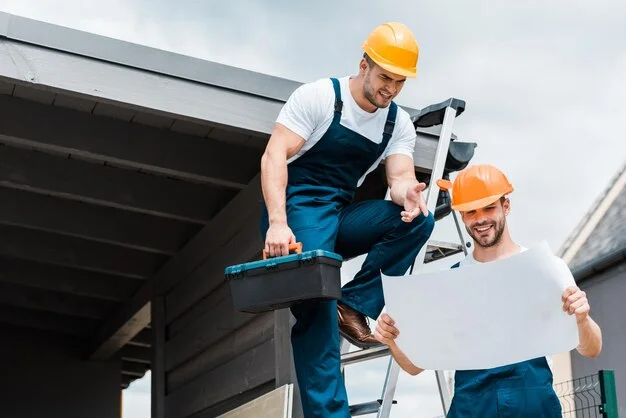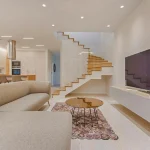A commercial building’s roof is one of its most valuable assets, providing protection against the elements, regulating indoor temperatures, and contributing to energy efficiency. Despite its importance, many business owners overlook routine maintenance, often addressing roofing problems only when significant damage occurs on Commercial roofing maintenance. Waiting until leaks or structural issues appear can lead to costly repairs, disrupt operations, and even pose safety risks to employees and customers.
A well-maintained commercial roof not only extends the lifespan of the roofing system but also helps businesses avoid unexpected expenses. From minor leaks to major structural failures, proactive maintenance is key to preventing small issues from escalating into costly repairs or replacements. Regular inspections and upkeep ensure that a commercial roof continues to perform efficiently, protecting both the building and the investments inside.
Pinnacle Roofing Group understands the unique challenges that commercial properties face when it comes to roof maintenance. Business owners who take a proactive approach to roofing care can prevent major problems, reduce operational disruptions, and safeguard their property’s long-term value. Here’s why commercial roofing maintenance should be a top priority for every business.
1. Preventing Expensive Repairs and Early Roof Failure
Ignoring minor roofing issues often results in expensive emergency repairs or even premature roof replacement. Small cracks, leaks, or damaged flashing may seem insignificant at first but can worsen over time, leading to extensive structural damage.
Common Issues That Can Escalate Without Maintenance:
- Water infiltration: A small leak can spread, damaging insulation, ceilings, and interior walls.
- Mold and mildew growth: Moisture trapped inside a roofing system can create health hazards.
- Membrane deterioration: Commercial flat roofs with rubber or TPO membranes can wear down due to UV exposure and weather fluctuations.
How Regular Maintenance Helps:
- Identifies and addresses minor problems before they become costly.
- Extends the lifespan of the roof, delaying the need for replacement.
- Helps businesses avoid sudden expenses that impact budgeting and operations.
2. Protecting Business Assets and Interior Spaces
A damaged roof doesn’t just affect the building—it also puts valuable assets at risk. Many commercial properties store expensive equipment, inventory, and important documents inside, all of which can be damaged by leaks or excessive moisture.
Potential Consequences of Roof Leaks:
- Damage to electrical systems and wiring, leading to fire hazards.
- Ruined computers, machinery, and inventory, resulting in financial losses.
- Compromised structural components, such as drywall, flooring, and insulation.
Why Maintenance Matters:
Regular inspections and maintenance ensure that the roofing system remains watertight, preventing leaks that could lead to financial losses and operational setbacks.
3. Enhancing Energy Efficiency and Reducing Utility Costs
An aging or poorly maintained commercial roof can contribute to rising energy costs. Gaps, cracks, and insulation failures allow heated or cooled air to escape, forcing HVAC systems to work harder.
How a Well-Maintained Roof Improves Efficiency:
- Prevents air leaks: Proper sealing and insulation reduce energy loss.
- Reflects sunlight: Cool roofing materials help regulate indoor temperatures.
- Supports HVAC performance: A properly insulated roof reduces strain on heating and cooling systems.
The Bottom Line:
Lower energy consumption translates into reduced operational costs, allowing businesses to allocate funds elsewhere.
4. Meeting Safety and Compliance Standards
Commercial buildings must adhere to strict safety regulations to ensure a secure environment for employees, tenants, and customers. A deteriorating roof can pose serious hazards, from falling debris to compromised structural integrity.
Risks of Neglecting Roof Maintenance:
- Slip and fall hazards caused by interior leaks and pooling water.
- Structural instability, especially in older buildings.
- Code violations that could result in fines or business interruptions.
Staying Compliant:
By conducting regular inspections and necessary repairs, businesses can maintain a safe environment and avoid potential liability issues.
5. Extending the Lifespan of the Roofing System
A commercial roof is a major investment, and business owners should take every step possible to maximize its longevity. With proper maintenance, a roof can last significantly longer than one that is neglected.
Factors That Shorten Roof Lifespan:
- Exposure to UV rays, wind, and storms without protective coatings or reinforcements.
- Water pooling on flat roofing surfaces, leading to deterioration.
- Lack of regular cleaning and debris removal, which can cause drainage issues.
How Maintenance Extends Roof Life:
- Preventative care reduces the need for frequent repairs.
- Protective coatings and sealants minimize environmental damage.
- Routine inspections help identify areas that require reinforcement.
6. Avoiding Business Disruptions and Downtime
Unexpected roof problems can disrupt business operations, leading to lost revenue and productivity. Leaks or structural failures may require temporary closures while repairs are conducted.
Impact of Roofing Issues on Business Operations:
- Leaks in retail spaces can damage merchandise and create liability risks.
- Water intrusion in office buildings can force employees to relocate.
- Structural damage in warehouses can halt logistics and storage operations.
Preventative Approach:
Scheduled maintenance allows business owners to plan for minor repairs rather than dealing with emergency fixes that could shut down operations unexpectedly.
7. Planning for Long-Term Budgeting and Cost Savings
Budgeting for roofing maintenance is far more cost-effective than dealing with emergency repairs or full roof replacements. A planned maintenance strategy allows businesses to allocate funds accordingly, avoiding unexpected financial burdens.
Key Financial Benefits of Maintenance Plans:
- Reduces the need for costly emergency repairs.
- Extends the life of the roof, delaying replacement costs.
- Helps businesses plan and budget for necessary upgrades.
8. Customizing Maintenance Based on Roofing Type
Not all commercial roofs require the same maintenance approach. Different roofing materials and designs come with unique challenges and upkeep requirements.
Common Commercial Roofing Types and Their Maintenance Needs:
- Flat roofs (TPO, EPDM, PVC): Require regular drainage checks to prevent water pooling.
- Metal roofs: Need inspections for rust, corrosion, and seam integrity.
- Asphalt and shingle roofs: Benefit from routine shingle replacement and flashing inspections.
Understanding the specific needs of a commercial roofing system ensures that maintenance efforts are effective and tailored to the building’s structure.
Final Thoughts
Commercial roofing maintenance is not just about preventing leaks—it’s about protecting a business’s assets, reducing long-term costs, and ensuring uninterrupted operations. Routine inspections, timely repairs, and proactive care can extend the life of a commercial roof while improving energy efficiency and safety.
For business owners looking to safeguard their investment, scheduling regular roof maintenance is the best way to prevent costly damage and unexpected disruptions. Pinnacle Roofing Group emphasizes the importance of proactive roofing care to help businesses maintain secure, efficient, and long-lasting commercial roofing systems.







